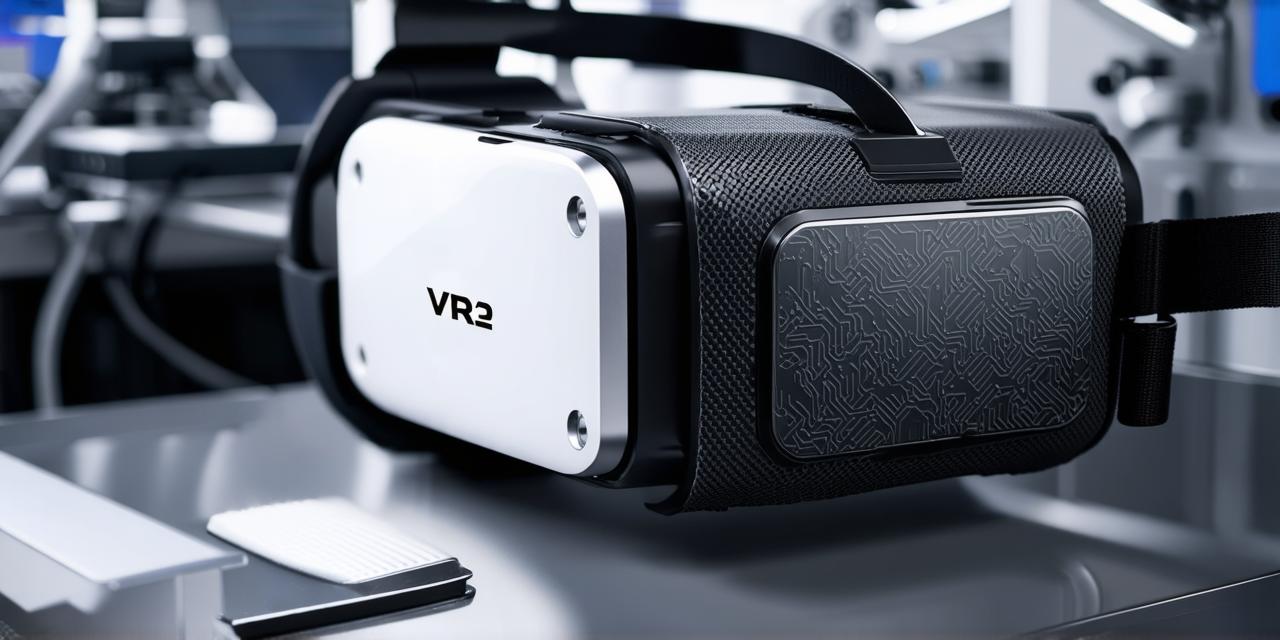Designing the Headset
The first step in the manufacturing process is designing the headset. This involves creating a 3D model of the device, which includes the shape, size, weight, and other features such as the display resolution, battery life, and tracking sensors. Designers also need to consider the user experience and ensure that the headset is comfortable and easy to use.
One of the most important aspects of designing a VR headset is the display technology used. This can include OLED (organic light-emitting diode), LCD (liquid crystal display), or LED (light-emitting diode) displays. These technologies differ in terms of resolution, color accuracy, and power consumption, so designers need to choose the best option based on the intended use case.
Another critical design consideration is the tracking system used to monitor user movements. This can include optical sensors, infrared sensors, or ultrasonic sensors. These systems work together to provide accurate motion tracking and ensure that the user remains immersed in the virtual environment.
Manufacturing the Headset Components
Once the design is finalized, the manufacturing process begins. This involves creating the various components of the headset, such as the display panel, tracking sensors, batteries, and other electronics.
The display panel is typically manufactured using a combination of semiconductor technology and advanced printing techniques. The display resolution and color accuracy are determined by the specific technology used, with higher-end displays featuring more pixels per inch (PPI) and better color accuracy.
The tracking sensors are also manufactured using semiconductor technology, with optical sensors being the most common type. These sensors use infrared light to track user movements and provide accurate positioning data. In addition, ultrasonic sensors can be used to supplement optical tracking and improve accuracy in certain applications.
The batteries used in VR headsets are typically lithium-ion cells, which offer high energy density and long battery life. These cells are manufactured using advanced chemical processes and are subject to strict safety regulations to ensure they are safe for use in electronic devices.
Assembling the Headset
Once all the components are manufactured, they must be assembled into the final headset. This involves mounting the display panel onto a frame, integrating the tracking sensors and other electronics, and installing the batteries. The assembly process requires precision and attention to detail to ensure that all components are properly aligned and connected.
Testing and Quality Control
After the headset is assembled, it undergoes rigorous testing to ensure that it meets the required performance specifications. This includes tests for display resolution, color accuracy, tracking accuracy, battery life, and other factors. Any issues or defects are identified and corrected before the headset can be released to the market.
In addition to testing, there is also quality control throughout the manufacturing process to ensure that all components meet the required standards. This includes inspections of raw materials, in-process testing, and final product inspections to ensure that the finished product meets or exceeds customer expectations.
Real-World Examples
To illustrate how virtual reality headsets are manufactured, let’s take a look at two popular VR devices: the Oculus Quest 2 and the HTC Vive Pro Eye.
The Oculus Quest 2 uses a combination of LCD displays and optical sensors for tracking. The displays feature a resolution of 1832 x 1920 per eye, which provides high-quality visuals and a realistic sense of immersion. The tracking system uses six infrared cameras and time-of-flight (ToF) sensors to provide accurate positioning data.
The HTC Vive Pro Eye, on the other hand, uses a higher-resolution display with a resolution of 2160 x 2160 per eye. This provides even higher visual fidelity and a more immersive experience. The tracking system uses a combination of optical sensors and ultrasonic sensors to provide accurate positioning data.
Summary
In conclusion, virtual reality headsets are manufactured using a combination of design, manufacturing, testing, and quality control processes. Designers need to consider the intended use case and choose the right display technology and tracking system for their application. Manufacturers must ensure that all components are properly assembled and meet the required performance specifications. Real-world examples like the Oculus Quest 2 and the HTC Vive Pro Eye illustrate how advanced technologies are used to create high-quality VR devices. As VR technology continues to evolve, we can expect even more innovative and immersive experiences in the future.
